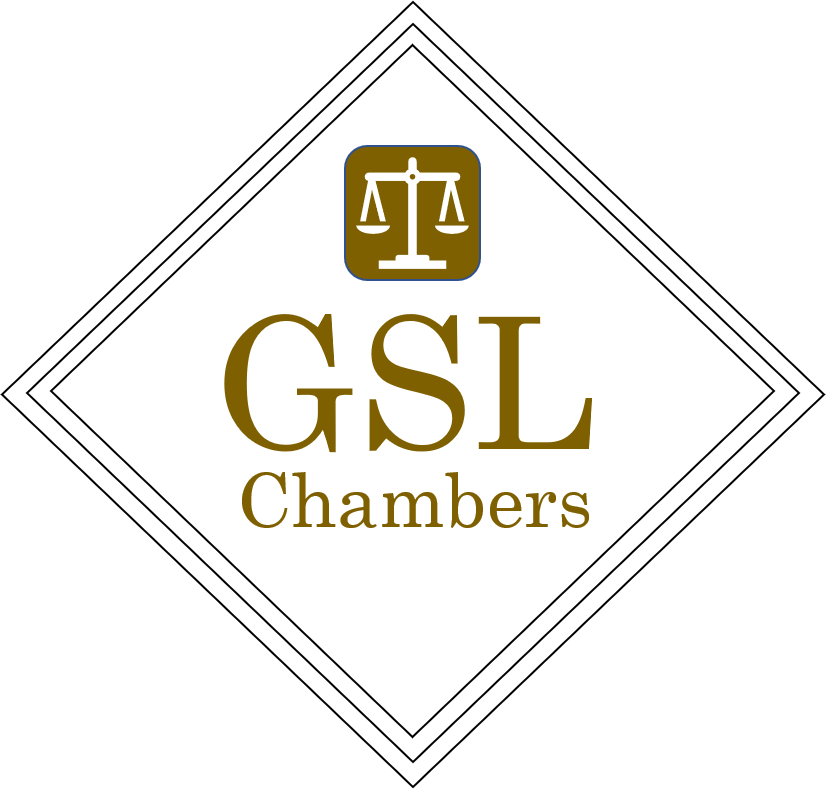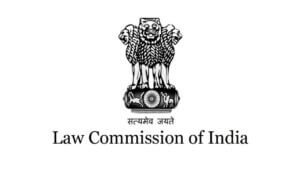Unleashing Growth: Exploring The Benefits of Fast-Track Mergers in Light of The Recent Amendment By MCA
– Abhinav Shrivastava and Pratham Mehadia
INTRODUCTION
Businesses are continuously looking for methods to boost efficiency, widen their market reach, and maximize shareholder value in today’s fast-paced business environment. Fast-Track Merger is one such restructuring method that has lately gained prominence. Fast-Track Mergers offer a more simplified approach, allowing organizations wishing to join rapidly to enjoy benefits. This article highlights the benefits, need, and process of Fast-Track Mergers in the Indian context, more specifically in light of the recent amendment dated 15 May 2023 brought by Notification No: – G.S.R 367(E) by Ministry of Corporate Affairs (“MCA”), Government of India which has been made applicable from 15 June 2023 by virtue of which the process of Fast-Track Mergers will be further speeded up thus profiting the companies.[1]
The meaning of “merger” is not strictly defined in the Companies Act of 2013, but in commercial terms, a merger is simply understood as a combination of two or more existing companies that merge their identities to form a different entity that can be one of the existing companies or may not be the existing company but may form a separate new entity entirely.
MERGERS
Mergers happen when two businesses join forces, and such deals often occur between two firms of comparable size that recognize the benefits the other provides in terms of increased sales, efficiency, and capabilities. The merger arrangements are frequently amicable and mutually agreed upon, and two firms become equal partners in the new company.
There are several sorts of mergers, as well as various reasons why organizations merge. Mergers are frequently used to broaden a company’s reach, enter new markets, or increase market share, and all of this is essentially done to boost the value of the company’s stock. During a merger, corporations frequently have a no-shop provision in place to prohibit further companies from purchasing or merging with them.
Most histories of mergers began in the late 19th century United States; moreover, it is seen that the mergers coincide historically with the existence of companies. In 1708, for example, the East India Company merged with an erstwhile competitor to restore its monopoly over the Indian trade. In 1784, the Italian Monte Dei Paschi and Monte Pio Banks were united as the Monti Reuniti. In 1821, the Hudson’s Bay Company merged with the rival North-West Company.
The Governing Statute in India: Companies Act, 2013
The passage of the Companies Act, 2013 was a watershed moment in India’s corporate law history. The Companies Act of 2013 is divided into 29 chapters, 479 sections, and 7 schedules.
Chapter XV (Sections 230–240) of the Companies Act, 2013 comprises provisions on Compromises, Arrangements, & Amalgamations and forms the basis of the corporate restructuring in the Indian premise.
Further, the Companies (Compromises, Arrangements, and Amalgamations) Rules, 2016 were also made public and came into effect on December 15, 2016, which are the primary set of rules governing the corporate restructuring regime in India.
To put simply, a merger, according to the Companies Act of 2013, is the uniting of two or more entities into one; the desired consequence is not only the consolidation of the assets and liabilities of the different corporations but also their organization into a single company.
FAST-TRACK MERGERS
A Fast-Track Merger, also known as a simplified merger or a short-form merger, is a streamlined method that bypasses certain regulatory and shareholder approval procedures that are common in ordinary mergers.
Fast-Track Mergers often involve one corporation, typically a parent or majority shareholder, combining with a subsidiary or a smaller target company that it already controls; however, the specifics may differ depending on the case to need a basis of the entity.
Certain classes of businesses, such as small businesses, holding companies, and subsidiaries, can combine or amalgamate using a simpler process.
REGULATORY FRAMEWORK OF FAST-TRACK MERGERS IN INDIA
Fast-Track Mergers under the Companies Act, 2013
Section 233 of the Companies Act, 2013 provides the widely acknowledged idea of the Fast-Track Merger Process, which creates a somewhat easier method for mergers and amalgamations of certain kinds of companies, including minor firms, holding and subsidiary companies. This approach allows these businesses to go through merger and amalgamation procedures swiftly, easily, and within a set time frame. The Companies Act, 2013 expressly states that it applies to all types of compromises and agreements involving these entities.
Mergers and amalgamations of two or more small businesses, or within holding companies and their wholly owned subsidiary (or between such entities as may be approved) are exempt from court permission under the Companies Act of 2013. The Registrar of Companies (“ROC”) and the Official Liquidator (“OL”), however, must be notified, and objections/suggestions must be given to the members. Mergers or amalgamations between two or more minor firms, as well as between a holding company and a wholly owned subsidiary, are permissible under the 2013 Act, subject to clearance from the appropriate authorities.
Companies Covered Under Fast-Track Mergers
Any of the following companies may enter into a merger or amalgamation agreement under Section 233 of the Act.
- Two or more start-up companies; or
- A merger of two or more Small Companies;
- A merger of a Holding Company and its wholly-owned subsidiary company.
“Start-up Company” is defined as a private business registered under the Companies Act, 2013 and acknowledged as such by the Department for Promotion of Industry and Internal Trade through Notification number G.S.R. 127 (E), dated 19 February 2019.
A “Small Company” means a company other than a public company is defined under Sec 2(85) Companies Act, 2013 —
- Paid-up share capital of which does not exceed Rs.50,00,000 or such higher amount as may be prescribed which shall not be more than ten crore rupees.
- Turnover of which as per profit and loss account for the immediately preceding financial year does not exceed Rs.2,00,00,000 or such higher amount as may be prescribed which shall not be more than one hundred crore rupees. Companies excluded in Fast-Track Mergers are:- Public companies (except amalgamations involving holding and wholly-owned subsidiary companies);
- Section 8 companies; and
- Companies or body corporates are governed by any special Act.
Procedure for Mergers according to Companies Act, 2013
- The board will hold a meeting to approve the merger’s drafting structure. The board adopts a resolution summoning a shareholders’ and creditors’ meeting in addition to approving the merger plan.
- The transferor and transferee file their proposed merger scheme with the ROC, the OL, and the Persons impacted by the scheme (together with a copy of the plan) after each company’s board of directors has approved the merger. The submission must be made on Form CAA-9, and it must include a request for any complaints or suggestions.
- The business files a declaration of solvency with the relevant ROC before a meeting of creditors and shareholders – this complies with Section 233(1)(c) of the Companies Act, 2013 and Rule 25(2) of the Companies (Compromises, Arrangements, and Amalgamations) Rules, 2016 According to the Companies (Registration Offices and Fees) Rules, 2014, this declaration is filed together with a fee to be submitted to the registrar.
- A meeting of creditors is also called to acquire their written permission. A 21-day notice is required, and creditors must be given a copy of a list of papers (as specified in Rule 6(3)). Some notable documents necessary in the process for Fast-Track Mergers are as under:-
- A copy of the draft scheme of the merger;
- The Declaration of Solvency;
- Copy of the latest audited financial statement of each company;
- Copy of valuation report, if any;
- Any other relevant and material information.
- The relevant members or classes of members are required to approve the plan at a general meeting which is attended by at least 90% of all of the shares in issue.
- The Regional Director gets a copy of the scheme as agreed by the creditors, along with a report on the outcome, within seven days of the conclusion of this meeting. (Form no CAA.11).
- If there are no objections or suggestions from the Regional Director, the merger may be allowed. If the ROC or the OL objects and the Regional Director considers that the merger plan is harmful to the public interest, the Regional Director may apply to the tribunal within 60 days of receiving the proposal.
- If the tribunal feels, for reasons to be documented in writing, that the plan should be examined in accordance with the procedure provided in section 232, it may confirm the scheme by issuing such order as it deems appropriate.
- The Regional Directors’ or Tribunal’s confirmation order of the scheme must be filed along with a fee, with the ROC having jurisdiction over the transferee and transferor company within 30 days of receipt of the order of confirmation, in accordance with the Companies (Registration Offices and Fees Rules, 2014).
Need for Fast-Track Mergers in India
Fast-Track Mergers are relatively new in India; the notion of Fast-Track Merger is well-known abroad, for example, in China and Brazil. According to the Brazilian context, mergers that are simple and competitively sensitive benefit from the CADE’s (Conselho Administrativo de Defesa Econômica/Administrative Council for Economic Defence) fast-track process, which requires that the process be completed within 30 days of the notification being filed. Comparatively, China frequently requires three months from notice to approval.
There is some uncertainty about the Regional Director’s ability to make modifications to the system. If the ROC, OL, has no problems with the program, it appears that the Regional Director must confirm without making any proposals of his own. The merger process, according to the Companies Act of 1956, was lengthy. It was high time now to improve the process as it led to huge losses for the company and country both. Fast-Track Mergers reduce the intervention of Tribunals.
Benefits & Advantages of Fast-Track Mergers
- No compulsory approval of the National Company Law Tribunal (“NCLT”) is required
- Public Advertisements are no more necessary.
- No Court Convened Meeting.
- Administrative Burden is less.
- Hearings may be avoided
- It will be assumed that registering the plan will result in the transferor companies being dissolved without going through the winding-up process.
- Cost Effective
THE RECENT AMENDMENT: A CATALYST IN THE EXISTING FAST-TRACK MERGER REGIME
A recent amendment dated 15 May 2023 brought by Notification No:- G.S.R 367(E) Ministry of Corporate Affairs (MCA) has been made applicable from 15 June 2023, as per which Rule 25(5) and Rule 25(6) have been amended as under:-
“(5) Where no objection or suggestion is received within a period of thirty days of receipt of the copy of scheme under sub-section (2) of section 233, from the Registrar of Companies and Official Liquidator by the Central Government and the Central Government is of the opinion that the scheme is in the public interest or in the interest of creditors, it may, within a period of fifteen days after the expiry of said thirty days, issue a confirmation order of such scheme of merger or amalgamation in Form No. CAA.12:
Provided that if the Central Government does not issue the confirmation order within a period of sixty days of the receipt of the scheme under sub-section (2) of section 233, it shall be deemed that it has no objection to the scheme and a confirmation order shall be issued accordingly.
(6) Where objections or suggestions are received within a period of thirty days of receipt of copy of scheme under sub-section (2) of section 233 from the Registrar of Companies or Official Liquidator or both by the Central Government and –
(a) such objections or suggestions of Registrar of Companies or Official Liquidator, are not sustainable and the Central Government is of the opinion that the scheme is in the public interest or in the interest of creditors, it may within a period of thirty days after expiry of thirty days referred to above, issue a confirmation order of such scheme of merger or amalgamation in Form No. CAA.12.
(b) the Central Government is of the opinion, whether on the basis of such objections or otherwise, that the scheme is not in the public interest or in the interest of creditors, it may within sixty days of the receipt of the scheme file an application before the Tribunal in Form No. CAA.13 stating the objections or opinion and requesting that tribunal may consider the scheme under section 232 of the Act:
Provided that if the Central Government does not issue a confirmation order under clause (a) or does not file any application under clause (b) within a period of sixty days of the receipt of the scheme under subsection (2) of section 233 of the Act, it shall be deemed that it has no objection to the scheme and a confirmation order shall be issued accordingly.”.
If no objections are raised by the ROC or the OL, then the merger is registered lawfully, and Regional Director issues confirmation of the merger in form CAA-12. However, if such objections or recommendations are made, and the Regional Director considers the merger to be against the interests of the creditors, the Regional Director must file an application with the National Law Company Tribunal (NCLT) within 60 days of receiving the application, expressing the obligation. Based on the objection, the NCLT shall decide whether the application shall be considered and authorized in accordance with Section 232 of the Companies Act, 2013 that is through the NCLT method or may pass an order confirming the application for a merger if NCLT thinks the application is proper. The transferee company must file the confirmation of the merger in Form INC-128, along with the necessary fees, with the ROC, who has his jurisdiction, within 30 days of receiving the confirmation order.
Now the process of Fast-Track Mergers will be cost-effective for small companies, with no intervention of a Tribunal, no audit report, and no administrative formalities making the process much easier for the company and impacting positively. As the process is time bound with a period of 60 days, the companies do not have to wait for a longer period and affect their resources and burn their inventories to merge in turn results in cost-effectiveness and optimum utilization of resources.
CONCLUSION
Rapid mergers take a simpler, more effective path. Section 233 of the Companies Act, 2013 establishes Fast-Track Mergers to streamline the merger process. It is applicable to small business mergers, holding companies mergers with subsidiaries mergers, and other types of organization as specified by the rules.
The Fast-Track Merger rule is undoubtedly advantageous. The legislature attempted to eliminate procedural hurdles in Tribunal proceedings by removing the requirement that a particular group of companies approach the tribunal. This led to a quicker resolution of Schemes, a lighter load on Tribunals, and a reduction in the expenses and resources of the companies involved.
In the Fast-Track Merger procedure, the NCLT does not interfere, and the Regional Director endorses the merger proposal. To ensure a risk-free transaction, there should be a provision for the merger in the AoA and preliminary due diligence.
The amendment brought by MCA on Fast-Track Mergers on 15 May 2023 will improve the disposal rate of Fast-Track Mergers and, in turn, facilitate ease of doing business as it prescribes a time frame of a maximum of 60 days for the Regional Director under the MCA for issuing a confirmation order if the ROC under which the company is registered or OL appointed for the merger does not raise any objection.
[1]Notification No: – G.S.R 367(E) by https://www.mca.gov.in/content/mca/global/en/home.html
References
- scconline.com
- Companies Act, 2013 & Rules
- Companies Act, 1956
- mca.gov.in
- icsi.edu
** Abhinav Shrivastava is a Co-Founding Partner of GSL Chambers. Pratham Mehadia is an intern at GSL Chambers.




